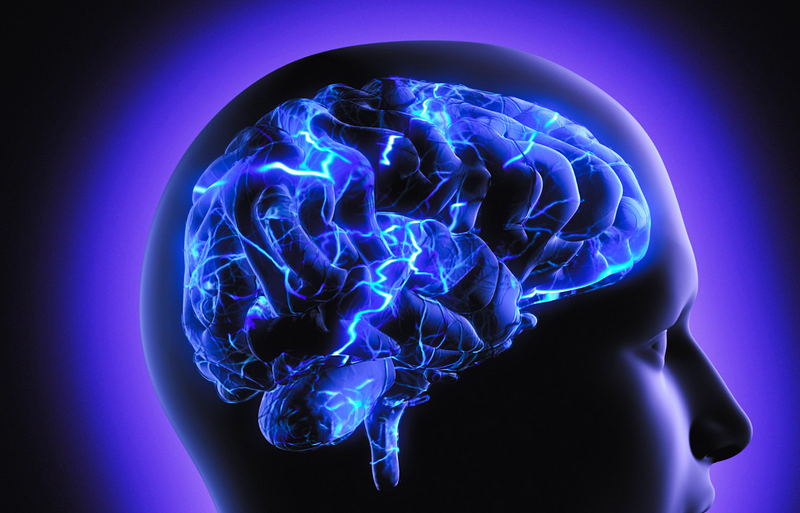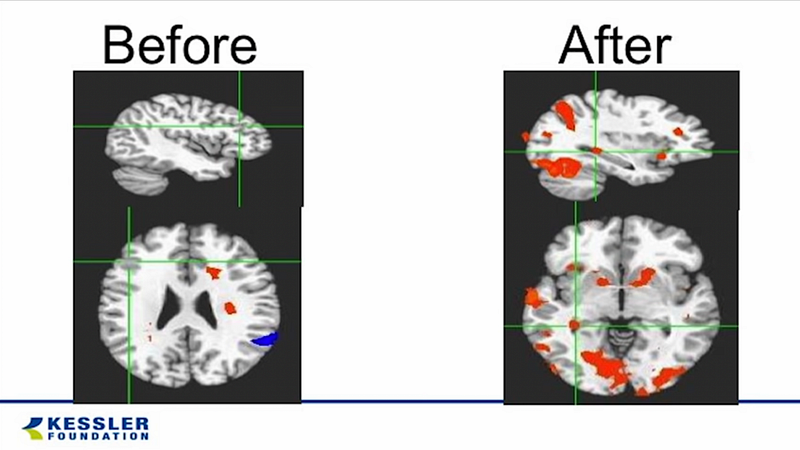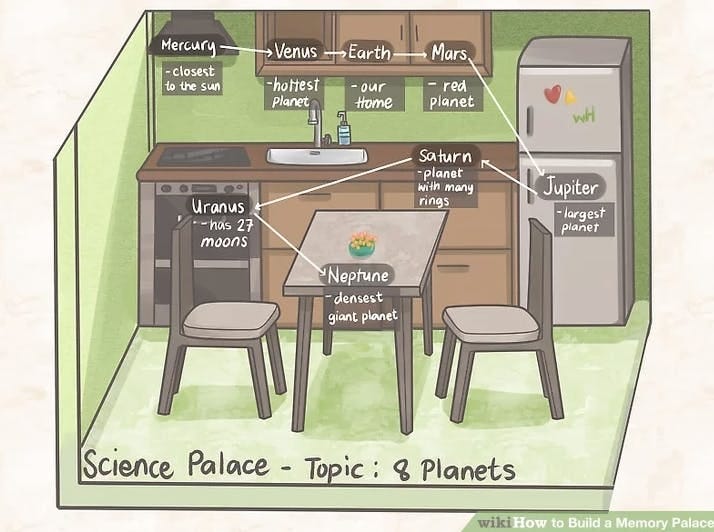How you can make the most out of your brain.

Meta-learning is one of the most powerful tools you can acquire.
No life skill can earn you greater dividends than learning effectively — you’ll need less time and energy to master any topic you want.
I spent the last years exploring the intersections between neuroscience, brain research, and cognitive psychology. I’ve shared my book recommendations on learning how to learn and how-to guides for applying the strategies to writing, reading, online courses, EdTech software and knowledge management.
In the last week, I watched and summarized 13 TED talks on memory, brain enhancement, and learning how to learn. The most insightful made it into this article.
By reading, you will learn how to best use your brain to get the result you want. You can read the article in one go or jump to the sections that are most interesting for you.
Here are the best ones I watched and the key messages so you can apply them to your life.
You’ll understand how neuroplasticity works (1), how you can actually change your brain (2), and acquire skills rapidly (3). You will then learn how specific strategies can improve (4) and increase (5) your memory function (4) and techniques to triple your memory (6) so you can remember everything you want with ease (7).
Table of Contents
1) After Reading This Your Brain Will Not Be the Same
2) Learn How to Learn From Somebody Who Has Transformed Her Brain
3) How to Learn Anything Fast in 20 Hours (Rapid Skill Akquisition)
4) Techniques to Improve Your Memory Function
5) The Most Transformative Thing to Improve Brain Function
6) Here’s How You Can Triple Your Memory
7) Supercharge Your Learning Practice With This Technique
1) After Reading This Your Brain Will Not Be the Same
How does your brain change throughout life based on what you think, do, and experience?
In her talk, brain researcher and professor Lara Boyds explains what science currently knows about neuroplasticity. In essence, your brain can change in three ways.
Change 1 — Increase chemical signalling
Your brain works by sending chemicals signals from cell to cell, so-called neurons. This transfer triggers actions and reactions. To support learning your brain can increase the concentration of these signals between your neurons. Chemical signalling is related to your short-term memory.
Change 2 — Alter the physical structure
During learning, the connections between neurons change. In the first change, your brain’s structure stays the same. Here, your brain’s physical structure changes — which takes more time. That’s why altering the physical structure influences your long-term memory.
For example, research shows that London taxi cab drivers who actually have to memorize a map of London to get their taxicab license have larger brain regions devoted to spatial or mapping memories.
Change 3 — Alter brain function
This one is crucial (and will also be mentioned in the following talks). When you use a brain region, it becomes more and more accessible. Whenever you access a specific memory, it becomes easier and easier to use again.
But Boyd’s talk doesn’t stop here. She further explores what limits or facilitates neuroplasticity. She researches how people can recover from brain damages such as a stroke and developed therapies that prime or prepare the brain to learn — including simulation, exercise and robotics.
Her research is also helpful for healthy brains — here are the two most important lessons:
The primary driver of change in your brain is your behaviour.
Repeated practice is the most effective way to reprogram your mind.
In line with other research on a concept called the desired difficulty, her research has shown that increased struggle during practice leads to both more learning and greater structural change in the brain.
This is counterintuitive yet super powerful, so let me rephrase it: Learning works best when it feels hard. You want to struggle while learning.
The opposite the “fluency illusion” while, e.g. rereading material, can give you a false illusion of competence. A helpful antidote is self-testing.
There is no one size fits all approach to learning.
The 10,000-hour rule is overly simplified. No single intervention is going to work for all of us in the same way. Lara Boyd makes a call for personalized learning.
She then continues with something I don’t agree with: “The uniqueness of your brain will affect you both as a learner and also as a teacher. And now this idea helps us to understand why some children can thrive in traditional education settings and others don’t.”
It’s not your brain’s uniqueness that determines whether you thrive or barely survive in traditional education settings.
She neglects socio-economical factors such as emotional support or a family’s income level. Moreover, there are actually evidence-based techniques that seem to work for almost all of our brains, see (2), (5), and (7).
The most powerful lesson to remember from her talk is the following: You’re never too old to stop learning. Because of neuroplasticity, you can build the brain you want.
2) Learn How to Learn From Somebody Who Has Transformed Her Brain
It hadn’t always been clear that Barbara Oakley would become a professor of engineering. She fell off the “math bandwagon” early on and flunked her way through elementary, middle, and high school math and science.
At age 26, during her military job, calculus and physics looked like hieroglyphics to her. But she didn’t settle with the status quo. She asked herself:
“What if I could get those ideas? What if I could learn that weird math language?”
So she set on a journey to change her brain — a journey that would ultimately influence many other learners as well.
Dr Oakley reached out to top neuroscience and cognitive psychology professors around the world. She asked them:
“How did you learn? And how do you teach, so others could learn?”
One of the key answers she got was the distinction between two brain modes: the focused and the diffused mode.
For optimal learning, you need the focused and the diffused mode.
In focused mode, you think based on prior knowledge and rely on often used neural connections associated with problem-solving on familiar tasks.
The diffused mode, on the other hand, feels like daydreaming and enables unpredictable, new neural connections.
When you let your mind wander without actively thinking about the problem, you likely come up with a solution you hadn’t thought about. It’s the state where creativity flows freely.
To learn, you need both.
Many people optimize their days for focused mode thinking — through deep work, flow states, and other work sessions. Learning can happen during focused attention.
But the diffused mode is equally important. Diffused thinking only occurs when our minds can wander, for example, during a shower or while going for a walk. While this feels like taking a brain break, our mind continues to work for us.
A famous example for this is Dali’s and Edison’s napping time, as Dr Oakley shares in her TED talk. To access their diffused thinking mode, they looked at a problem and took a nap to come up with a solution.
To integrate the two thinking modes into your daily schedule (and to beat procrastination), you can use the Pomodoro technique — focusing for 25 minutes and giving yourself a pleasurable 5-minute brain break afterwards.
How to learn most effectively
Lastly, she gives a couple of applicable knowledge nuggets on how to learn most effectively.
- Exercise can increase your ability to both learn and to remember (also see 5).
- Testing yourself, e.g. through flashcards, until the solution flows like a song from your mind.
- Instead of rereading and highlighting, recall something from your memory. Look at a page, look away, and see what you can remember from the top of your mind.
- Understanding is not enough to build mastery of new material. Instead, you want to combine it with practice and repetition in different circumstances.
Now let’s look at a concrete example of how you can acquire new skills rapidly.
3) How to Learn Anything Fast in 20 Hours
What if you’d only need 45 minutes a day for a month to get decently good at skills such as language learning, coding, or arts?
Out of necessity (his newborn child minimized his free time), Josh Kaufman explored how to learn new things really fast. As a result, he developed the most efficient practice method.
The 4-step process to learn any skill fast
The 10,000-hour rule is a myth — instead, there are four steps neccessary for rapid skill acquisition:
- Deconstruct a skill by breaking it down into smaller pieces. The more you can break it apart, the better you can learn. For example, learning to write online becomes idea-collection, headline practice, introduction writing, editing, and distribution.
- Learn just enough to self-correct. Books, courses, etc. are often a way to procrastinate on the practice itself. Use resources to learn enough to know when you make a mistake. Then practice.
- Remove any distractions that keep you from practising. This aligns with what many smart people such as Clear or Thaler preach. Self-control and self-discipline depend much more on your environment than on your willpower. Ban your phone and TV from your practice.
- Really practice for the full 20 hours. You have to do the work and overcome initial frustration barriers. The greatest barrier to learning something is emotional, not intellectual. So, push through the initial “feeling stupid” phase and learn for 20 hours before your stop.
4) Techniques to Improve Your Memory Function
Memory works in three stages: encoding, consolidation, and retrieval.
Nancy Chiaravalotti’s research focuses on the first part — remembering new information such as names of people you meet or items from your to-do list.
To enhance how you encode two very effective techniques:
Use imagery
Attach an image or picture to visualize the information. For example, if you want to remember the word ‘house’, picture your house. Thereby, you encode new information in two ways (verbal and visual), which increases brain activity.
A very effective way to remember things better is to combine unrelated ideas into a single image. The best image for any given word, is the one you associate with the strongest memory.
For example, “mum at the beach” for you would look completely different from me (because your picture would be your mum and a beach would be the most vivid beach you can bring to your mind).
Make it even more robust through context
What comes before or after a word by providing more semantic meaning. For example, instead of just a house, you can say the old house on the hill. Invent a mini-story around new information.
The best way is to combine both techniques. Chiaravalloti tested this with people who have memory injuries and found significant improvements after ten sessions.

You are able to change your brain. Start to visualize things and add a story to better remember what you want to learn.
5) The Most Transformative Thing to Improve Brain Function
Neuroscientist Dr Wendy Suzuki used to sit, read, and study for hours. She published well-respected articles and was on her way to becoming a renowned memory researcher.
Still, she felt something was off. It wasn’t until she started regular exercise that she felt better.
“After every sweat-inducing workout that I tried, I had this great mood boost and this great energy boost. And that’s what kept me going back to the gym,” she says in her TED talk. “I was able to focus and maintain my attention for longer than I had before. “
Because of the benefits she felt, Dr Suzuki did something unusual for researchers. She changed her research field — from memory pioneer to exercise explorer.
Exercise changes your brain in three main ways
And that’s how she came to the hypothesis that exercise is the most transformative thing that you can do to your brain: “Moving your body has immediate, long-lasting and protective benefits for your brain. And that can last for the rest of your life.”
Immediate attention increase. A single workout will immediately increase your levels of neurotransmitters such as dopamine, serotonin and noradrenaline. This, in turn, improves your ability to shift and focus attention for at least two hours following your workout.
Memory enhancement. Long-term exercise changes the hippocampus (critical for your capability to form and absorb new long-term memories). You produce new brain cells that improve your long-term memory.
Protective brain effects. Your brain is like a muscle. The more you’re exercising, the bigger and stronger your hippocampus and prefrontal cortex (critical for attention, decision-making, and focus) gets. The two areas will grow and slow down the effects of neurodegenerative diseases like Alzheimer and dementia.
A single researcher’s team discoveries aren’t enough to confirm her hypothesis. But there’s a canon of research that attests to the brain-altering effects of exercise.
Researchers from Harvard have shown that exercise boosts verbal memory, thinking and learning. Plus, moving your body supports your ability to learn a new language by enhancing your ability to remember, recall and understand new vocabulary.
You don’t need to become a marathon runner to unlock the benefits of exercise. As a rule of thumb, you want to exercise three to four times a week for at least 30 minutes.
6) Here’s How You Can Triple Your Memory
What’s the best way to memorize things?
Ricardo Lieuw On, the founder of remind learning, walks the audience through a memory palace to make them remember the first ten presidents of the United States.
He makes the case why creating bizarre images in a place you know helps you memorize things in order.
Yet, he doesn’t mention how to build a memory palace. Here’s my brief explanation if you want to learn the so-called “method of loci”:
How to develop your personal memory palace
There are five steps you can use to create your personal memory place.
- Pick a place. Choose a space you remember vividly, e.g., your childhood home or your workplace. Close your eyes and picture the floor plan. Now take a mental walk inside the location.
- Identify specific features. Remember distinctive features about your space. If you use your childhood bedroom, for example, you can include your bed, shelf, closet, lamp, window, door, and carpet. These features will serve as memory slots.
- Repeat the walk. Once you’ve identified a couple of objects, repeat the mental walk three times. Always use the same direction. Visualization can feel tough first, but it’ll become easier with practice.
- Fill the spots with things you want to remember. Once you’ve established your memory palace, you can imprint it. Say you’re trying to memorize the planets in their distance to earth. All you need to do is take the known object (e.g. your bed), and visually place Mercury on it. You continue with the other planets on your other memory slots.
- Revisit your memory palace from time to time. Repetition strengthens your neural representations. That’s why you want to visit your memory places once in a while. You can build as many places as you like because your brain capacity is unlimited.

7) Supercharge Your Learning Practice With This Technique
Brain athletes can memorize a card deck within 12 seconds — TEDx speaker Boris Nikolai Konrad can do it in 30.
Boris also completed two master studies (physics and computer science) in the time of one and holds a PhD in psychology. He is fluent in English and Dutch and speaks decent Mandarin and Spanish.
Yet, he wasn’t born with a better brain than yours.
Building better memory is a skill you can learn.
These people (including Boris’s) don’t have a better memory than you do. Brains of memory athletes do not look different from yours.
In his talk, he shares a manual on how to develop a superbrain.
Just as Lieuw On (6) made his audience memorize 10 presidents, Konrad made his audience remember physics through a visual story.
And on top of these two memory experts, Jonathan Levi explores the same accelerated learning technique in his talk.
A picture is worth more than a thousand words.
In quintessence, all three share the idea that a picture is worth more than a thousand words. Instead of remembering verbal facts, your brain is more likely to remember the information if you picture it (this is also in line with (4)).
Let’s say you want to remember China’s 14 neighbouring countries: Afghanistan, Bhutan, India, Kazakhstan, Kyrgyzstan, Laos, Myanmar, Mongolia, Nepal, North Korea, Pakistan, Russia, Tajikistan and Vietnam.
Instead of rereading the list, again and again, a much more effective technique is to visualize an image for each of the countries. Here’s his example — but remember that yours can look completely different (as its dependent on your strongest association with a word).

In Conclusion
Some themes reoccur in all talks, such as your innate ability to change your brain whenever you want, the power of visualization, and adding context and stories to remember new information better.
Once you get better at the process of learning, you can apply it anywhere to your life — hobbies, jobs, or relationships. In Dr Oakley words:
“Learning how to learn is the most powerful tool you can ever grasp. Don’t follow your passions, but broaden your passions and your life will be enriched beyond measure.”
May you enjoy your learning journey.
[…] I Analyzed 13 TED Talks on Improving Your Memory — Here’s the Quintessence — from learntrepreneurs.com by Eva Keiffenheim How you can make the most out of your brain. […]